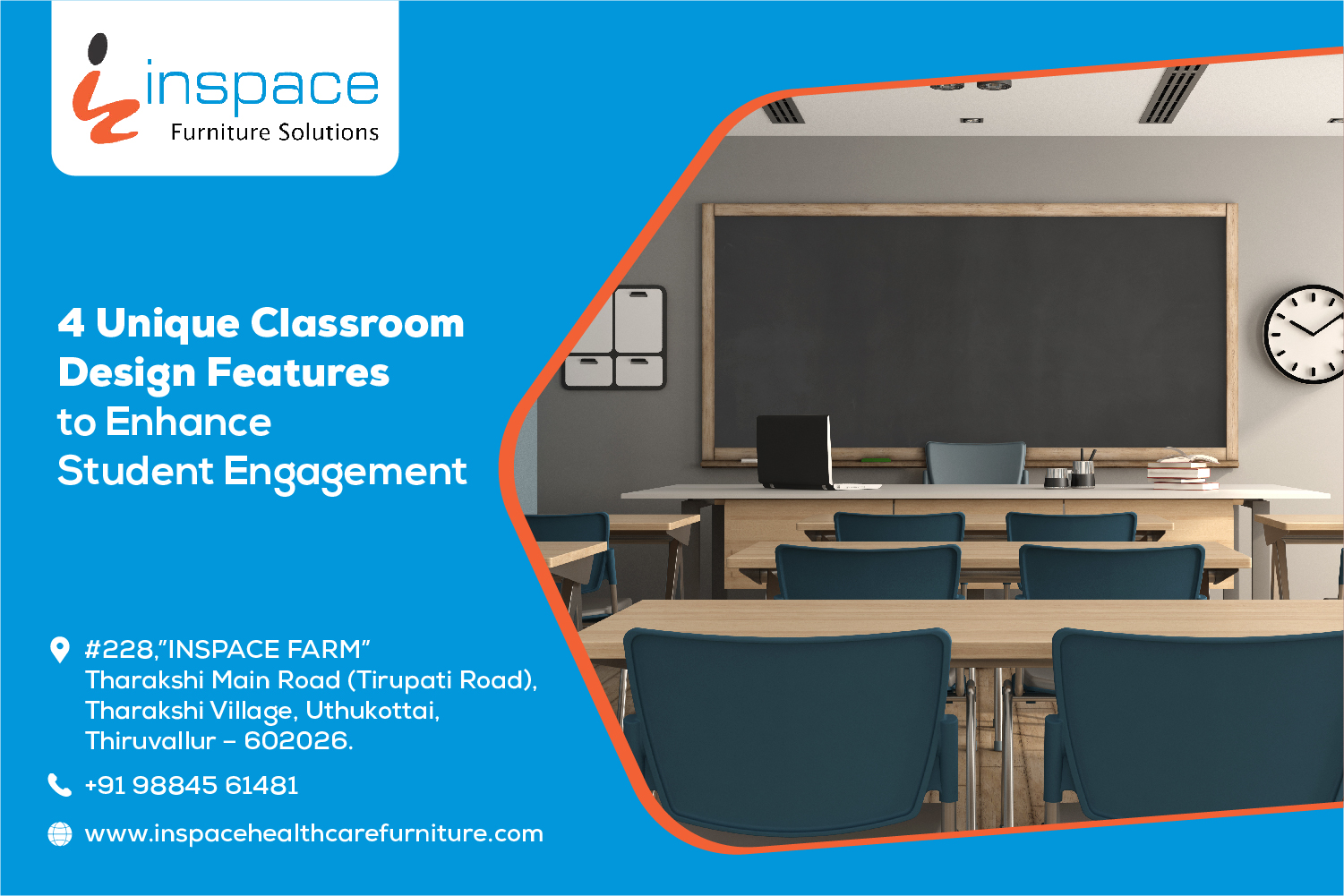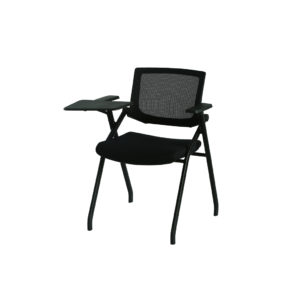4 Unique Classroom Design Features To Enhance Student Engagement

- Inspace Team
- September 2, 2021
- 5:20 am
- No Comments
Innovation drives change in every industry, and the education sector is no exception to the principle of constant growth and adaptation. In 2012, a groundbreaking study revealed that classroom design alters academic performance by 25%.
That said, design may not provide a lasting answer to total reform of the educational process. However, school design holds enormous potential. It is powerful enough to create and support successful school strategies and promote positive behaviour among students.
School furniture design for the 21st century is more innovative, creative, and versatile. Modern and innovative schools achieve their value by adapting to the evolving nature of educational spaces and incorporating modern school furnishings. Our blog explores five distinctive design features influencing student engagement in schools and classrooms.
New Design Features Shaping Modern Student Journeys
1. Flexibility of classroom design
Today’s school students are incredibly fortunate. They have the luxury of studying in classrooms that don’t resemble traditional classrooms. The traditional classrooms lack what is needed to engage the children of the 21st century. Lifeless chairs mounted on rigid, bulky desks arranged in rows facing forward do not equate to a successful and engaging classroom environment.
Flexibility is the key to today’s classroom design. It is a pivotal factor that supports the many facets of constructive learning. Furthermore, we have ample evidence from research to prove that flexibility in classroom design creates conducive learning environments.
In 2015, Edutopia had published a case study highlighting the benefits of versatile classroom layouts. Also, a study done at The University of Salford, England, revealed that flexible learning spaces influenced 73% of students’ progress. Besides that, when children were allowed to take ownership of their learning environment, they showed a dramatic improvement. Thus, versatile classroom layouts limit distractions, promote a sense of well-being and keep children focused.
The solution:
Modern school furniture plays a prominent role in facilitating flexibility in classrooms. They are:
- Height-adjustable desks
- Stackable desks
- Stackable chairs
- Single-unit chair and desk
- Mobile storage units
- Foldable teaching accessories
- Ergonomic seating options
- Modular desks and chairs
The benefits:
- A flexible classroom encourages children to engage themselves in diverse, collaborative tasks and enjoy the learning process.
- It keeps students focused with an exchange of stimulating conversations and discussions.
- It facilitates easy furniture arrangements that promote open class discussions for everyone to participate equally.
2. Zoning out private and public spaces
Creating a private and public space within the four walls of a classroom is quite a revolutionary step. This concept is proof enough that modern classroom designs are indeed created with top priority to student well-being.
This idea stems from the understanding that each student learns differently. Some students may prefer group study, while some may want to learn independently. Hence, it drives the need for collective and individual learning, best achieved by incorporating zone design in the classroom. All you need is versatile, stackable, and lightweight furniture that allows you to rapidly create private and public spaces shared between students.
The solution:
- Mobile dividers
- Desks and chairs with wheels
- Wheeled tables
- Sliding glass walls
- Modular classroom furniture
The benefits:
- A change of configuration and position promotes better focus, energy, and attention.
- Moving between zones allows productive and reflective individual work as well as teamwork that fosters social cohesiveness.
- Allows teachers to offer spaces for individual and group study simultaneously.
- Well-defined, cosy spaces encourage student-to-student interaction in small groups.
- Zonal configuration of classroom furniture improves the students’ convenience and comfort.
3. Complementary furnishings and environments
Imagine an aesthetic-looking classroom filled with equally attractive modular furniture. Now imagine a drab and dull classroom sporting the same appealing furniture. Which one would children prefer? The answer is obvious.
The best classroom design is one that is purposefully crafted as an ideal environment. When space and furniture complement each other, it can tremendously affect the learning experience. More than 90% of the classrooms are simple, single spaces used for multifunctional purposes. They are transformed into a constructive learning environment when you blend functionality with aestheticism.
The solution:
Assess your classroom space and select furniture that supports diverse tasks and activities to balance the environment and furnishings.
You can also derive inspiration from Regina Public Schools in Canada. Take a look at how they’ve created a functional learning environment with modern school furniture.
The benefits:
- A constructive and purposeful learning environment prepares children for the task at hand.
- Students are empowered as learning becomes easier and positively impacts their self-esteem.
- A cohesive environment encourages focused work and timely completion of school work.
4. Technology and nature
The most famous 20th-century designers derived immense inspiration from the elements of the natural world. The same principle can be used as a guiding measure to incorporate a balance between technology and nature in the classroom environment.
Classroom furniture and tech gadgets interspersed with a bit of greenery can be very soothing to the minds of the teachers and students. The O-Office Architect’s Hongling Experimental Primary School in China is a classic example of environmental balance. The concrete school building is a neat blend of modern architecture and greenery. Trees and shrubs are providing a natural welcoming presence within the building’s interior.
The benefits:
- Blending natural and tech elements infuses a sense of balance, energy, and calmness that a traditional setting cannot offer
- Student creativity and expression are virtually unlimited when they are at home in their environments.
- Students are better prepared for the working world when technology is used in the classroom.
Does Classroom Furniture Design Impact Student Experience?
Most certainly, yes! Ideally, school furniture design should be focused on the physical and mental health of the student. It must allow them to achieve holistic learning experiences. Uncomfortable furniture can adversely impact the mental and physical well-being of school children. It can derail their focus and creativity.
Good furniture translates to an ideal learning environment, which lays the ground for better academic strategies. All these aspects point towards one common goal: Student-centredness. Apparently, students perform better in an environment where all the aspects are conducive.
How can this be done? Experts say that two features can help instil an ideal ambience: High ceilings and large windows. High ceilings create a wider space, making the classroom roomier. Low ceilings are said to induce stress as they create enclosed spaces. Additionally, large windows provide ample ventilation and natural brightness to the classroom.
To derive inspiration, you can look at the Buckingham County Primary And Elementary Schools in Virginia.




